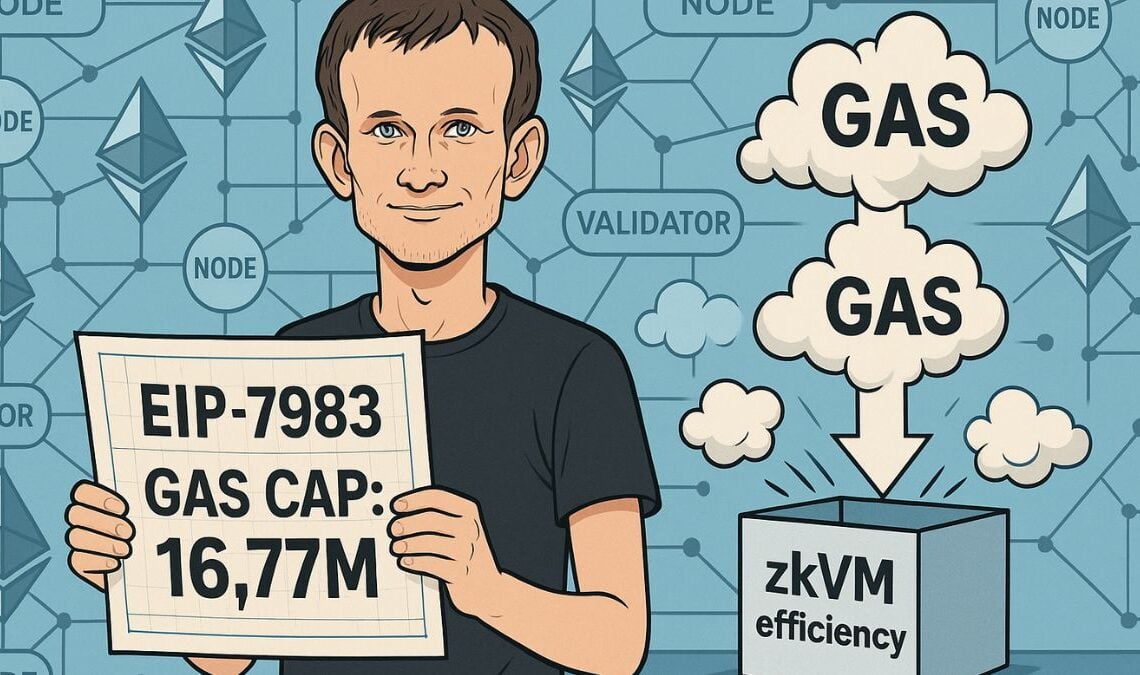The core of this Ethereum proposal is simple: no single transaction would be able to consume more than 2²⁴ gas, equivalent to 16,777,216 gas units. This limit would apply even if the block itself allows more, acting as a safety measure.
While the majority of transactions today fall far below that threshold, the proposal is designed to protect the protocol from edge cases or malicious exploits that could weaponize unusually high gas usage.
⚡️ TODAY: Vitalik and Wahrstätter co-authored EIP-7983 to cap Ethereum transaction gas at 16.77M.
— Cointelegraph (@Cointelegraph) July 6, 2025
It aims to reduce DoS risk, improve zkVM, and balance gas use. pic.twitter.com/4tF48AwX0p
In the tweet shared by Cointelegraph, it was highlighted that the cap is intended to:
- Reduce the risk of DoS attacks
- Improve zkVM performance and efficiency
- Ensure more consistent resource allocation across transactions
Developers note that this approach could also simplify client implementation and reduce variability in transaction processing times.
Ethereum Gas Cap: Technical and Strategic Implications
Historically, Ethereum has left individual transaction gas usage largely unconstrained within the block gas limit. This flexibility allowed innovation but also opened the door to gas-heavy contracts and potential attack vectors.
By introducing a fixed transaction-level gas cap, the Ethereum proposal EIP-7983 is addressing one of the lesser-discussed dimensions of blockchain resilience: execution-level denial-of-service risk.
The cap is not designed to limit throughput, block limits remain unchanged, but to prevent transactions that could monopolize resources. This could be particularly useful in the context of zk-rollups and modular execution models, where consistent performance is essential.
Community Response and Next Steps
While no formal implementation date has been announced, the reaction within the developer community has been largely positive. Many see it as a non-controversial, low-risk improvement that aligns with Ethereum’s long-term scaling roadmap.
Some concerns have been raised around legacy dApps or contracts that might push against this new ceiling, but early analysis suggests that most existing applications are already well within the limit.
Source: DeFi Llama Eth Cain Fees
If EIP-7983 moves forward without significant opposition, it could be included in one of the upcoming protocol upgrades, potentially alongside other minor EIPs aimed at improving efficiency and security.
Final Thoughts: Why This Ethereum Proposal Matters
This new Ethereum proposal may appear technical on the surface, but its implications are fundamental. By capping gas at the transaction level, Ethereum is proactively addressing performance bottlenecks and safeguarding its execution layer against future attack vectors.
For users, this means more reliable transactions. For developers, it adds predictability. And for Ethereum as a protocol, it’s yet another step toward robust, modular, and secure scalability.

















